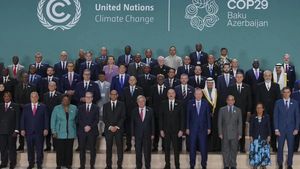The Federal Highway Administration has officially greenlit New York City’s revised congestion pricing plan, giving the go-ahead for one of the most anticipated transit funding initiatives. This approval, announced on November 21, sets the stage for the new tolls to begin as early as January 5, 2024. The plan, which targets vehicles entering Manhattan south of 60th Street, aims to tackle the notorious traffic jams plaguing the area, all the lineup is set to generate substantial revenues for the city's struggling public transit system.
The new pricing structure introduces a base toll of $9 for drivers, reduced from the initially proposed $15. According to Governor Kathy Hochul, this adjustment is intended to ease the financial burden on daily commuters. "$15 was too much," she stated during her announcement. Those who frequently travel to Manhattan stand to benefit, potentially saving up to nearly $1,500 annually.
But it's not all smooth sailing. The congestion pricing scheme has faced considerable opposition, particularly from New Jersey lawmakers who argue the toll unfairly targets their commuters. New Jersey Governor Phil Murphy has been vocal against the plan, asserting it only exacerbates the already high costs facing local residents amid economic struggles. His administration is exploring legal avenues to block the implementation, viewing it as nothing more than a revenue grab under the guise of congestion management.
Rep. Josh Gottheimer (D-5th) has echoed these sentiments, calling for federal scrutiny of the pricing structure, which he argues does not adequately account for the impact on New Jersey drivers. Murphy also highlighted concerns felt by the broader electorate about economic strains accentuated by rising inflation. With this new toll set to take effect soon, many anticipated travelers are left uncertain about their commutes.
For those living and working within the city, the congestion pricing model is viewed as not just beneficial but necessary. The revenues generated are expected to pave the way for significant improvements within the Metropolitan Transportation Authority (MTA) infrastructure, which desperately requires funding. The program anticipates raising around $1 billion annually, which will bolster financial support for projects like subway signal system modernizations, electric bus expansions, and accessibility improvements at various stations.
The revamped plan allows for some exclusions and discounts, particularly aimed at assisting low-income drivers. A provision grants eligible drivers earning less than $50,000 per year significant breaks. After their tenth toll of the month, the cost for subsequent entries plummets by 50%, easing the financial burden for those who travel frequently.
Despite these concessions, implementation hasn't been without its hurdles. The state initially paused the congestion pricing plan back in June, as city officials sought ways to alleviate burdens on New Yorkers coping with the fallout from the COVID-19 pandemic. Hochul emphasized the necessity of allowing Lower Manhattan to stabilize economically before rolling out the tolls.
Meanwhile, Hochul's decision to revive the congestion pricing plan has the backing of many advocacy groups, who stress the dire need for action to resolve transportation issues. Advocates have pushed for reinstituting the plan, fearing potentially catastrophic long-term effects if congestion pricing were shelved indefinitely.
Political tensions run high as both sides gear up for the impending changes. Hochul has maintained optimism about the benefits the scheme will provide to New Yorkers, aiming to cut down on gridlock and lessen greenhouse gas emissions. The federal green light marks what many hope will be the final step necessary to reshape how New York City manages congestion and pays for public transit improvements.
With the congestion pricing plan now officially moving forward, many are keeping their eyes on the upcoming January launch, eager to see whether this ambitious plan can meet its goals or if opposition will hinder its potential effectiveness. For now, the tolls will begin at $9, but the long-term plan is to gradually increase it to $15 by 2031. Observers will be watching closely as the program brings forth both challenges and opportunities for the millions who live and work within New York City, as well as those commuting from nearby states.



